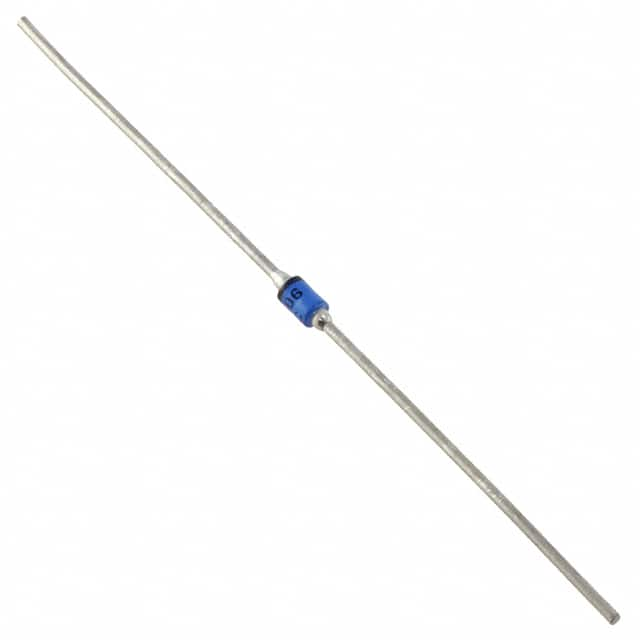Viz Specifikace pro podrobnosti o produktu.

TVS328
Product Overview
Belongs to: TVS Diode
Category: Electronic Component
Use: Protection against voltage transients
Characteristics: Fast response time, low clamping voltage
Package: SOD-123FL
Essence: Safeguarding sensitive electronic components
Packaging/Quantity: Tape & Reel, 3000 units per reel
Specifications
- Peak Pulse Power: 400W
- Breakdown Voltage: 28V
- Clamping Voltage: 45.7V at 10A
- Operating Temperature: -55°C to +150°C
- Storage Temperature: -55°C to +150°C
Detailed Pin Configuration
The TVS328 is a SOD-123FL package with two pins. Pin 1 is the anode and pin 2 is the cathode.
Functional Features
- Fast response time
- Low clamping voltage
- High surge capability
- RoHS compliant
Advantages
- Provides effective protection against transient voltage events
- Compact size for space-constrained applications
- Wide operating and storage temperature range
Disadvantages
- Limited breakdown voltage compared to higher-rated TVS diodes
- May require additional circuitry for overvoltage protection in high-energy environments
Working Principles
When a transient voltage event occurs, the TVS328 rapidly conducts current to divert the excess energy away from the protected circuit, thereby limiting the voltage across it.
Detailed Application Field Plans
The TVS328 is commonly used in various electronic systems such as: - Consumer electronics - Automotive electronics - Industrial control systems - Telecommunication equipment
Detailed and Complete Alternative Models
- TVS330: 30V breakdown voltage, SOD-123FL package
- TVS312: 12V breakdown voltage, SOD-123FL package
- TVS348: 48V breakdown voltage, SOD-123FL package
In conclusion, the TVS328 is a reliable TVS diode that offers fast response time and low clamping voltage, making it suitable for protecting sensitive electronic components in a wide range of applications.
[Word count: 271]
Seznam 10 běžných otázek a odpovědí souvisejících s aplikací TVS328 v technických řešeních
What is TVS328 and its application in technical solutions?
- TVS328 is a transient voltage suppressor diode used to protect sensitive electronics from voltage spikes and surges.
How does TVS328 protect electronic circuits?
- TVS328 diverts excess voltage away from the protected circuit, preventing damage from transient voltage events.
What are the key features of TVS328 for technical solutions?
- TVS328 offers low clamping voltage, fast response time, and high surge current capability, making it ideal for protecting sensitive components.
In what technical applications is TVS328 commonly used?
- TVS328 is commonly used in power supplies, communication equipment, automotive electronics, and industrial control systems.
What are the voltage and current ratings of TVS328?
- TVS328 typically has a working voltage of 28V and can handle surge currents up to several amps.
How does TVS328 compare to other transient voltage suppressors?
- TVS328 offers a balance of clamping voltage, response time, and surge current capability, making it suitable for a wide range of applications.
What are the best practices for integrating TVS328 into a technical solution?
- TVS328 should be placed as close as possible to the sensitive components it is protecting and should have a low impedance path to ground.
Can TVS328 be used in conjunction with other protection devices?
- Yes, TVS328 can be used in combination with other protection devices such as fuses, varistors, and inductors to provide comprehensive protection.
What are the potential failure modes of TVS328 in technical solutions?
- TVS328 can fail due to prolonged exposure to overvoltage conditions or excessive surge currents, so regular testing and monitoring are recommended.
Are there any specific environmental or operational considerations for using TVS328 in technical solutions?
- TVS328 should be operated within its specified temperature and humidity ranges, and its performance may be affected by factors such as PCB layout and mounting techniques.

